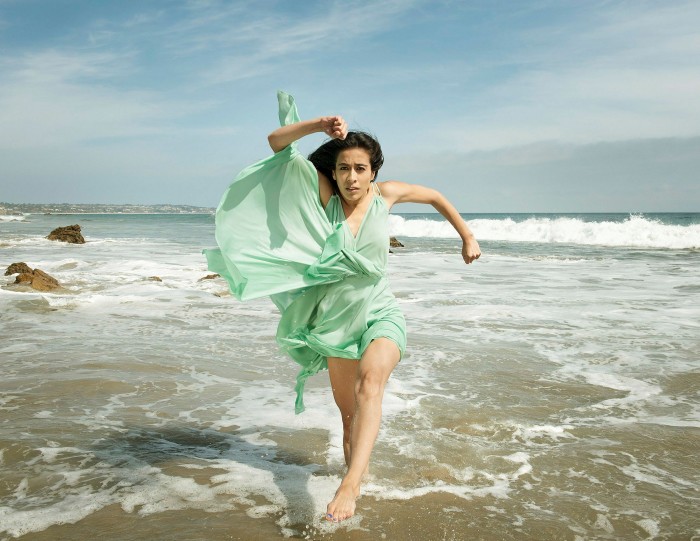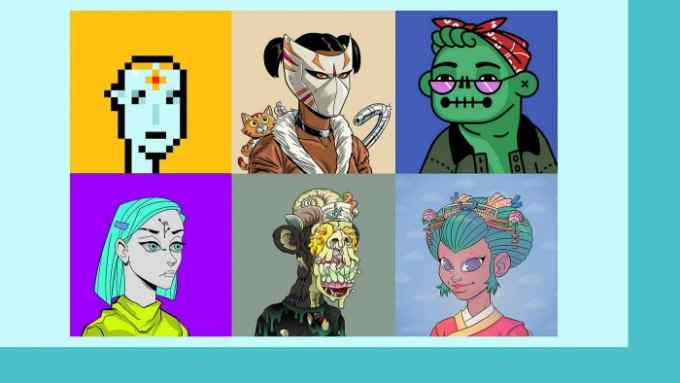Christine Messineo, new director of Frieze LA and Frieze NY, on loving the local

Roula Khalaf, Editor of the FT, selects her favourite stories in this weekly newsletter.
Christine Messineo, the new director of Frieze Los Angeles and Frieze New York, is overseeing her first fair. Conveniently, she is also overlooking it: Messineo has a room at the Beverly Hilton, and Frieze LA will open on Thursday in its shadow at 9900 Wilshire Boulevard. “You can see in the background behind me, the tent is already being erected,” she tells me, speaking over video call a few weeks before kick-off. She moves to pull back the curtain, then decides against a grand reveal. “I feel like the view isn’t the most beautiful right now,” she says diplomatically.
When the third edition of Frieze LA opens on February 17, Messineo will have been in the job for only 81 days. The resurgence of Covid has made it a gruelling winter for the industry: the day we speak, Art Basel Hong Kong has joined the list of fairs postponing over Omicron-related restrictions. But the Frieze juggernaut rolls on. Messineo reels off the LA fair’s healthy vitals. “Our tickets are selling out, our VIP slots are filled,” she says. There are 100-odd galleries exhibiting, and so far none has pulled out. The only hiccup is that the first edition of Frieze Sculpture Beverly Hills, a free event akin to the one Frieze London hosts in Regent’s Park, has been postponed because of shipment issues.

The first thing to clear up is a numbers puzzle. Before Messineo’s arrival, Frieze LA and Frieze New York had separate directors: Loring Randolf on the East Coast and Bettina Korek on the West. Does one job plus one job not equal two? Messineo laughs. What’s happened, she explains, is that the operational side of both roles has been cleaved off, leaving her free to focus on “artistic programming” rather than logistics. “It’s easier to take on both those cities as an individual because I have the support to be able to make that happen,” she says.
Messineo’s background is in the gallery world: she was a director at Hannah Hoffman in LA and a partner at Bortolami in New York before Frieze. It’s noticeable that Messineo talks about Frieze as if it’s an extension of the gallery world, rather than a sales floor of an entirely different magnitude. “They are a fair that’s interested in discovery,” she says when I ask why she wanted the job. In 2020, she also orchestrated the Plan Your Vote campaign, for which she convinced more than 60 high-profile artists to donate to a public library of artworks encouraging people to vote. It was likely this final achievement that secured her the Frieze role, as it showed she could corral artists and disparate institutions towards a common goal.
“No one else can embark on a project like that, where it’s a combination of artists relations and then institutional relationships,” she says. “I had over 150 museums and institutions that were pushing out this messaging.”


Messineo’s appointment signals that Frieze wants to continue to be taken seriously as a creative platform, not just a marketplace. The pandemic has forced art fairs to justify themselves: if art can be viewed and bought online, why should buyers (or, indeed, galleries) spend time and money on showing up in person? The solution is to make sure that the fair is a destination: commission installations, organise special projects, co-ordinate with galleries and museums to make “Frieze week” buzzy and distinctive.
Whereas it was once acceptable, perhaps even aspirational, for big-ticket art fairs to look identical the world over, localism is now in vogue. Forty per cent of exhibitors at Frieze LA are from the city, and a Focus LA section will bring young galleries into the fair. In the two months since she joined, Messineo has initiated a project called the BIPOC Exchange in collaboration with local artist Tanya Aguiñiga. This section of the fair will feature the work of LA-based creative organisations led by BIPOC creatives (the acronym stands for Black, Indigenous and People of Colour).

“I’m particularly [interested in] these moments where we’re able to integrate the landscape of the city into the fair,” says Messineo. This is especially important in LA, which Messineo describes as a city where people “support their own”. Back when she was an exhibitor, she’d always try to bring works to LA that had a connection to the city — something that was far less important at other fairs.
Messineo has worked in both New York and LA, and has spent several years moving back and forth between the two cities, now often accompanied by her husband and son. I am curious to know how the two art markets compare. Is there any truth to the idea that art is made in LA, but sold in New York?
“I don’t think that’s true,” says Messineo, who has the distinctly West Coast habit of smiling broadly when she disagrees with you. “New York has a different history of patronage, it’s just ingrained in that city. But LA is learning.” Among the other differences she notes: LA has more mentors, New York more patrons; in LA artists hang out at each others’ studios, in New York they “go to every opening”; LA artists work on big sculptures, New York artists often work at table-scale. “We have room to think grandly in Los Angeles,” she says.
Frieze LA runs February 17-20, frieze.com

Comments